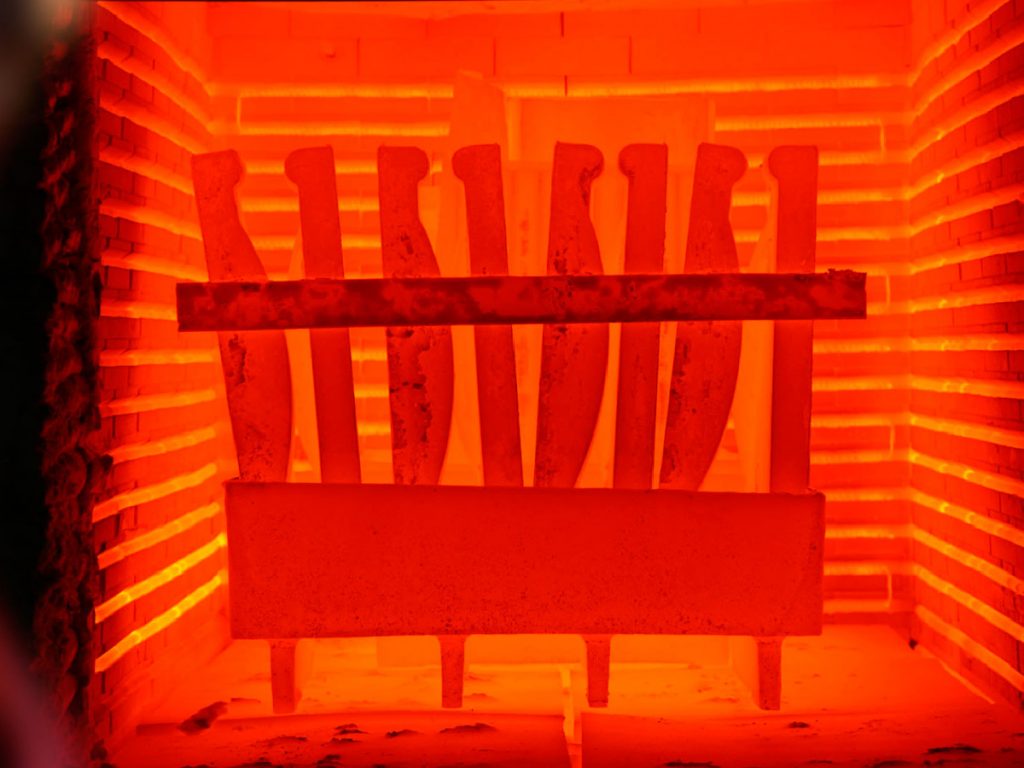INTRODUCTION
The topic to treat, nowadays we find them very present in the environment that surrounds us, like for example; in all type of articles, already be in decoration, tools, spare parts of cars, machines, bearings, knives, etc.
So we can say that the thermochemical treatments are part of the thermal treatments, since the piece suffers a heating and later a suitable cooling, with the difference that the piece has been coated with a chemical substance that modifies its surface structure. The chemical substances normally used are: carbon, nitrogen and sulphate, which can be in a gaseous, liquid or solid state.
So we can distinguish five thermochemical treatments:
- Cementing
- Nitriding
- Cyanidation
- Sulfinization
- Carbonitriding
Thermochemical treatments are heat treatments in which, in addition to changes in the structure of the steel, there are also changes in the chemical composition of the surface layer, adding different chemicals up to a certain depth. These treatments require the use of controlled heating and cooling in special atmospheres.
Among the most common objectives of these treatments are to increase the surface hardness of the parts leaving the core softer and more tenacious, to decrease friction by increasing the lubricating power, to increase wear resistance, to increase fatigue resistance or to increase corrosion resistance.
We will summarize the definition of the types of thermochemical treatments:
Cementing (C)
Increases the surface hardness of a mild steel part, increasing the concentration of carbon on the surface It is achieved by taking into account the environment or atmosphere surrounding the metal during heating and cooling. The treatment manages to increase the carbon content of the peripheral zone, obtaining afterwards, by means of tempering and quenching, a great surface hardness, resistance to wear and tear and good toughness in the core.
Nitriding (N)
As with carburizing, it increases the surface hardness, although it does so to a greater extent by incorporating nitrogen into the surface composition of the part. This is achieved by heating the steel to temperatures between approximately 400 ºC and 525 °C, within a stream of ammonia gas, plus nitrogen.
Cyanidation (C+N)
Surface hardening of small steel parts. Cyanide, carbonate and sodium cyanate baths are used. They are applied between approximately 750 ºC and 950 °C.
Carbonitriding (C+N)
Like cyanidation, it introduces carbon and nitrogen into a surface layer, but with hydrocarbons such as methane, ethane or propane, ammonia (NH3) and carbon monoxide (CO). The process requires temperatures of approximately 650 to 850 °C, and subsequent hardening and tempering is necessary.
Sulfinization (S+N+C)
Increases resistance to wear and tear by the action of sulfur. Sulfur is incorporated into the metal by heating, at a temperature of approximately 565 °C, in a salt bath.
In MetalCast we offer these and other processes to achieve the requirements of the metal parts that our customer needs.
Contact our team to identify the necessary elements so that your project of production of metallic pieces to the measure has the characteristics that this looking for your company.

